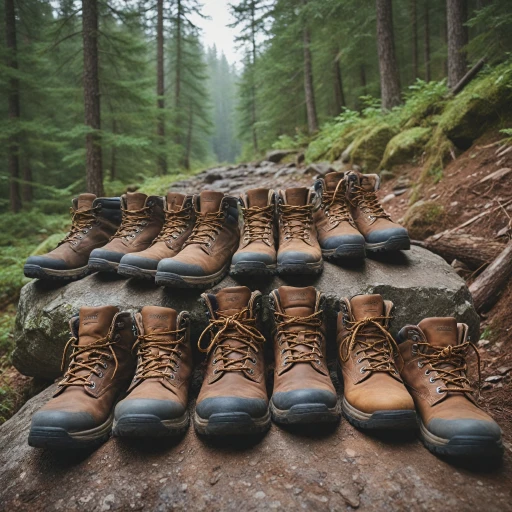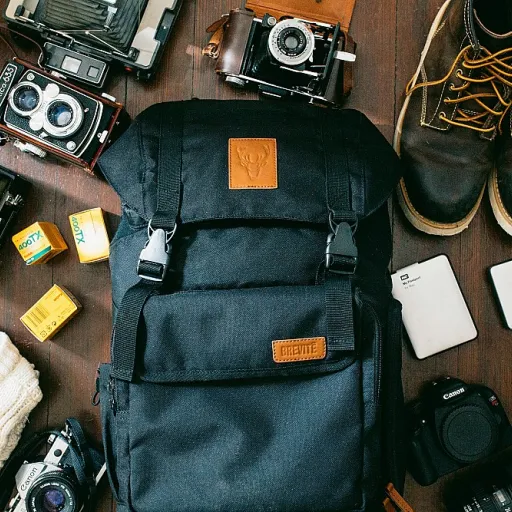
Understanding felt sole wading boots
What Sets Felt Sole Wading Boots Apart?
For outdoor enthusiasts, experienced hikers, and anglers, the choice of wading boots can make or break a day on the river. Felt sole wading boots have become a staple in the gear lists of many who regularly tackle slippery, algae covered rocks and unpredictable riverbeds. Unlike standard rubber soles, felt soles offer a unique texture and grip, providing superior traction in wet environments. This is especially important for fly fishing or when navigating swift currents where stability is crucial.
Felt soles are crafted from dense, compressed fibers that create a sticky sole effect, helping boots cling to slick surfaces. Many reviews highlight how these boots felt more secure on mossy stones compared to traditional rubber sole wading boots. Some products, like those from Korkers, even feature interchangeable soles, allowing users to switch between felt and rubber depending on the terrain and local regulations. This flexibility is a major advantage for those who hike and fish in diverse environments.
When considering a new wading boot, factors like price, delivery options, and product durability come into play. Men’s wading boots with studded felt soles or interchangeable soles are often favored for their versatility and performance. However, it’s important to weigh these benefits against potential drawbacks, such as environmental concerns and maintenance needs, which will be discussed further in the article.
For those interested in exploring other specialized footwear for challenging conditions, check out this guide on choosing the right men’s snowmobile boots for extreme winter hikes.
Traction and performance on slippery surfaces
How Felt Soles Excel on Slick Terrain
For anglers and hikers who regularly cross rivers or traverse algae-covered rocks, traction is everything. The unique texture of felt soles grips wet, slimy surfaces far better than most rubber alternatives. This is why many experienced fly fishing enthusiasts and river hikers still favor boots with felt soles, despite the rise of rubber sole wading boots in recent years.
- Superior grip: Felt soles act almost like a sponge, conforming to uneven surfaces and maximizing contact with slippery rocks. This is especially noticeable when wading through fast-moving water or navigating mossy streambeds.
- Reduced slips: Reviews consistently highlight that boots felt with studded felt or sticky sole options offer even more security, making them a top choice for those who prioritize safety over price or delivery speed.
- Performance in real-world conditions: Whether you’re fishing, hiking, or combining both, felt sole wading boots help maintain balance and confidence where rubber soles can falter. This is particularly true on rivers with smooth, algae-covered stones, where rubber sole wading boots may struggle to provide the same level of traction.
Some brands, like Korkers, offer interchangeable soles, allowing users to switch between felt and rubber depending on the terrain. This flexibility is valuable for those who want to adapt their wading boot to changing conditions or comply with local regulations. For men wading in challenging environments, the right product can make the difference between a successful outing and a dangerous slip.
While felt soles shine on slick rocks, it’s important to consider the pros and cons of alternatives, such as rubber soles or studded felt, which are discussed further in this guide. For those interested in broader trends in outdoor footwear, including innovations like rear entry ski boots, this article on ski boot advancements offers useful insights.
Environmental considerations and regulations
Balancing Traction with Environmental Responsibility
Felt sole wading boots have long been favored by anglers and hikers for their superior grip on algae covered rocks and slippery riverbeds. However, the use of felt soles has raised environmental concerns, especially regarding the spread of invasive species. When moving between different rivers or lakes, felt can trap and transfer tiny organisms, which may threaten local ecosystems. This risk has led to regulations in several regions, with some states and countries banning felt soles altogether. Before purchasing a new pair of boots, it's essential to check local regulations to avoid fines and help protect waterways.
For those who need reliable traction but want to minimize their environmental impact, some brands now offer interchangeable soles, allowing users to switch between felt, rubber, and studded options. Korkers wading boots, for example, provide this flexibility, letting anglers and hikers adapt to both terrain and legal requirements. Rubber soles and studded felt alternatives are gaining popularity, as they are easier to clean and less likely to harbor invasive species. Still, reviews often note that felt remains unmatched on slick, mossy surfaces.
Proper maintenance is crucial for any wading boot, but especially for those with felt soles. Cleaning and drying boots thoroughly after each use can reduce the risk of spreading unwanted organisms. Some products even feature removable insoles or quick-dry materials to make this process easier. For more tips on staying prepared for changing conditions, check out this guide on essential hiking accessories for river adventures.
Ultimately, the choice between felt, rubber, or interchangeable soles depends on your priorities: traction, price, environmental impact, and local rules. Responsible use and regular maintenance help ensure that your boots support both your adventures and the health of the rivers you love.
Durability and maintenance tips
Keeping Your Felt Soles in Top Shape
Felt sole wading boots are a favorite among anglers and hikers for their reliable grip on algae covered rocks and slippery riverbeds. But to get the most out of your boots, regular care is essential. Proper maintenance not only extends the life of your wading boots but also helps maintain their traction and performance.- Rinse after every use: After fishing or hiking, rinse your boots and felt soles thoroughly with fresh water. This removes grit, mud, and potential invasive species that can cling to the felt.
- Dry completely: Always let your boots dry fully between uses. Store them in a well-ventilated area, away from direct sunlight or heat sources that could damage the felt or rubber components.
- Inspect for wear: Check the soles regularly for signs of excessive wear, separation, or thinning. Felt soles can wear down faster than rubber soles, especially on rough terrain or when used for fly fishing in rocky rivers.
- Clean to prevent spread: To avoid spreading invasive species, scrub the felt with a stiff brush and consider using a mild disinfectant. Some regions have regulations requiring this step for all fishing wading boots.
- Replace when needed: If the felt is coming loose or has lost its grip, it’s time to replace the sole or invest in a new pair of boots. Some brands, like Korkers wading boots, offer interchangeable soles, making replacement easier and more cost-effective.
Boosting Longevity and Value
The price of high-quality men wading boots or boots felt with studded felt or sticky sole technology can be significant. Regular maintenance helps protect your investment. For boots with interchangeable soles, such as those from Korkers, swapping between felt and rubber soles based on terrain and regulations can also extend the life of each sole type. Reading reviews before purchasing a product can give you insight into durability and delivery experiences. Look for feedback on how well the felt sole holds up in real-world fishing and hiking conditions. Remember, a well-maintained wading boot not only performs better but also supports responsible outdoor recreation.Alternatives to felt soles: pros and cons
Comparing Felt, Rubber, and Interchangeable Soles
When it comes to wading boots, the choice of sole can make or break your experience on the river. While felt soles have long been favored by anglers and hikers for their superior grip on algae covered rocks, there are several alternatives worth considering. Each option comes with its own set of advantages and drawbacks, especially when factoring in price, performance, and environmental impact.
- Rubber Soles: Modern rubber soles have improved significantly, offering better traction than older models. They are easier to clean, reducing the risk of spreading invasive species. However, even the stickiest rubber sole may struggle on slick, mossy riverbeds compared to felt. Some anglers add studs to rubber soles for extra grip, but this can increase the price and may not match the natural feel of felt.
- Interchangeable Soles: Brands like Korkers have popularized boots with interchangeable soles, allowing you to switch between felt, rubber, and studded options. This flexibility is ideal for those who fish or hike in diverse environments or need to comply with local regulations. The initial product price is higher, but the versatility can justify the investment for serious users. Reviews often highlight the convenience of swapping soles as a key benefit.
- Studded Felt and Studded Rubber: Adding studs to either felt or rubber soles can boost traction on slippery surfaces. Studded felt is especially effective on covered rocks, but it can be noisy and may damage delicate stream beds. Studded rubber is a good compromise for those who want grip and easier cleaning, though it can wear down faster on hard surfaces.
When choosing between these alternatives, consider your primary activity—whether it's fly fishing, hiking, or both. Men wading in fast rivers may prioritize grip, while those concerned about invasive species might lean toward rubber or interchangeable soles. Delivery times and availability can also influence your decision, as some specialized boots felt or rubber sole options may be in high demand during peak fishing seasons like Nov.
Ultimately, no single wading boot or sole type is perfect for every situation. Weigh the pros and cons, read product reviews, and think about the environments you'll be exploring before making your choice.
Choosing the right felt sole wading boots for your adventures
Key Features to Evaluate Before Buying
When it comes to selecting the right felt sole wading boots for your next river adventure, there are a few essential factors to weigh. The right boot can make a significant difference in both safety and comfort, especially for anglers and hikers who spend long hours on algae covered rocks or slippery riverbeds.
- Traction and Sole Options: Felt soles are known for their superior grip on wet, mossy stones, but some boots offer interchangeable soles, letting you switch between felt, rubber, or studded felt for different conditions. Brands like Korkers wading boots are popular for this flexibility.
- Fit and Comfort: A good fit is crucial, especially for men wading in cold rivers or hiking long distances. Look for boots with supportive ankle collars and enough room for wading socks. Check reviews for feedback on sizing and comfort during extended use.
- Durability: The best wading boots use reinforced stitching and abrasion-resistant materials. Felt soles can wear down over time, so consider how easy it is to replace the sole or opt for models with durable, sticky sole rubber options.
- Environmental Impact: Some regions restrict felt soles due to concerns about invasive species. Always check local regulations before purchasing. If you travel to different fishing locations, interchangeable soles can help you comply with varying rules.
- Stud Compatibility: For extra grip, especially on slick, covered rocks, some boots allow you to add studs to the felt or rubber soles. Studded felt can be a game changer in fast-moving water.
- Price and Value: Wading boots range in price, with premium models offering features like quick-drying uppers, reinforced toe caps, and easy delivery options. Balance your budget with the features you need for your style of fishing or hiking.
Comparing Top Products and User Feedback
Before making a purchase, compare product reviews from experienced anglers and hikers. Look for feedback on how the boots perform in real-world conditions, including fly fishing in rivers with slippery rocks or hiking along muddy banks. Pay attention to comments about delivery times, durability, and how well the boots handle different types of soles.
Making Your Final Choice
Ultimately, the best felt sole wading boot is the one that matches your specific needs—whether you prioritize traction, environmental compliance, or the ability to swap out soles for different adventures. Take the time to research, try on different models if possible, and consider how each feature will impact your experience on the river or trail. With the right pair of boots, you’ll be ready for any fishing or hiking challenge ahead.














